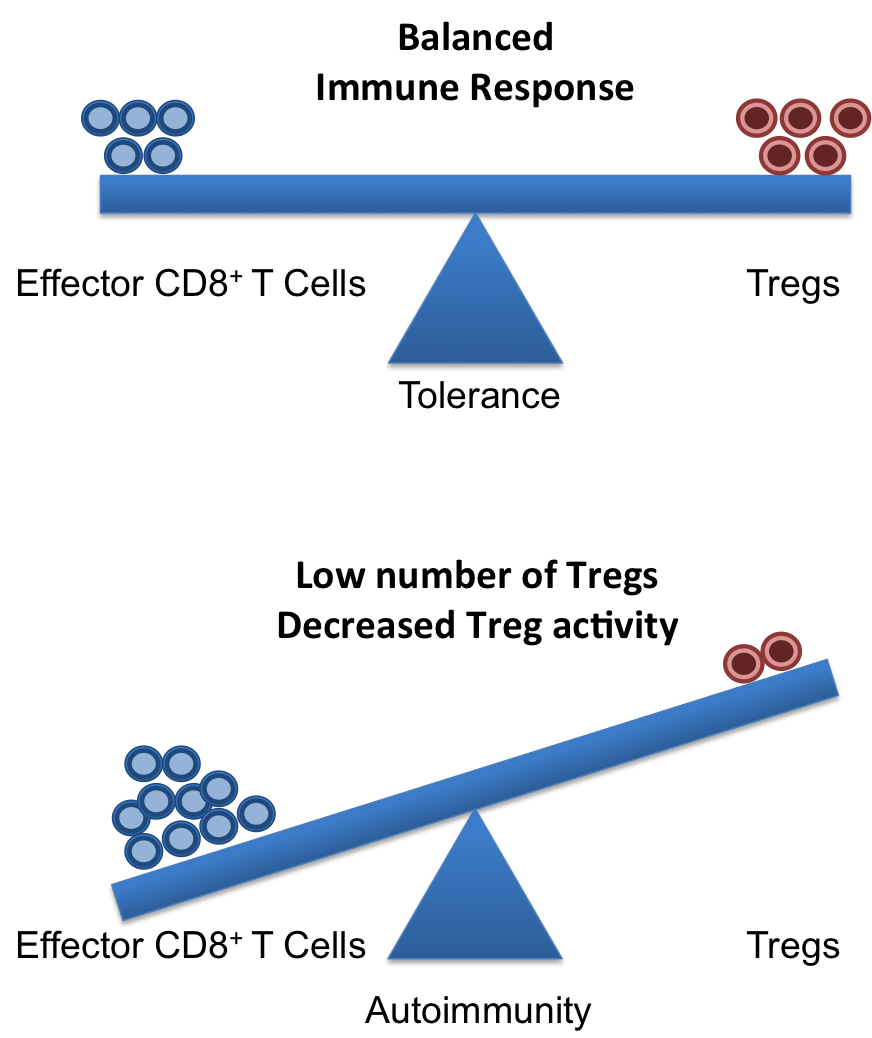The ability to form an effective immunotherapy relies on our understanding of the nuances of the immune response. This lack of understanding may limit promising therapies from reaching the clinic. In classical immunological dogma, cytotoxic T lymphocytes (CTLs) are activated by antigen presenting cells, primed for targeting cells expressing a certain antigen in their Major Histocompatibility Complex I (MHC I)1 , then expanded and sent to the targeted area. This methodology would allow for ex vivo expansion and activation of CTLs for therapeutic purposes. However, in the treatment paradigm of adoptive cytoxic T lymphocyte (CTL) therapy of virally-infected liver, immunomodulatory signals in the microenvironment of the infected organ cause CTLs to undergo exhaustion, inhibition, or apoptosis. Interestingly, collections of macrophages, known as granulomas, have been shown to form after mycobacterial infection and are thought to activate CTL function2 . In a recent article in Nature Immunology, Huang et al. demonstrate that a unique subpopulation of inflammatory, monocytic myeloid cell clusters, named intra-hepatic myeloid-cell aggregates for T cell population expansion (or iMATEs), are able to expand CTLs at sites of infection through an antigen-independent mechanism.
The authors first studied the effects of inflammatory activation on CTLs using ex-vivo activated, adoptively-transferred CD90.1+ CTLs in CD90.2+ mice; assaying for changes in CTL proliferation, increase in myeloid (CD11b+, Major Histocompatibility Class II-positive (MHCII+)) populations in mice treated with ligands for Toll-like Receptor 9 (TLR9), and Toll-like Receptor 4 (TLR4). In this system, higher amounts of CTLs in the liver only occurred when TLR9 or TLR4 ligands were given, indicating that this stimulation is responsible for CTL proliferation2.
Huang et al. also noted that these proliferating cells were not uniformly dispersed inside the liver and, when tested with mice that had knocked out Tlr9, the adoptively transferred CTLs did not proliferate. Thus, Huang et al. posited that the activation of TLR9 must occur in cells that were not CTLs. Since macrophage are susceptible to TLR9 stimulation, the authors abrogated the macrophage population and saw a decrease in CTL proliferation in the liver 2. Furthermore, these monocytes showed clustering after TLR9 stimulation, which coincided with proliferative T-cell phenotype.
In order to show that iMATES are a population that, when stimulated, will facilitate the expansion of CTLs by iMATES, Huang et al. demonstrated CTL proliferation using transferred CD90.1+ CTLs in CD90.2+ mice, assaying for changes in CD8 (CTL maker),CD45.1 (B Cell Marker) and CD11b (Innate Immune Cell marker) expression levels using intravital microscopy, immunohistochemical analysis, and electron microscopy. Data showed that CTL proliferation was localized to the liver site and iMATE formation only required TLR9 stimulation. Furthermore, the authors demonstrated that TLR9 treated mice had higher amounts of resident moncoyte cells (Kupffer cells) and non-resident cells of a monocytic origin. Moreover, monocyte derived-Dendritic Cells (DCs), and not conventional DCs, were found in the TLR9-mediated inflammatory site, which were uniquely able to induce CTL proliferation without antigen presentation2.
The correlation of iMATE formation with CTL proliferation begs the question which mechanism is responsible for iMATE-induced CTL proliferation. To assay for this, the authors looked at the iMATE population for changes in costimulatory receptors and found the receptors CD80, CD86, and OX40L to be upregulated. Furthermore, OX40L was not found in parenchymal liver tissue, thus the authors believed that OX40L/OX40-stimulation may play a significant role in iMATE-induced proliferation of CTLs. Huang et al. demonstrated that TLR9-induction of CTL proliferation only occurred when OX40 receptor was expressed on CTLs and only occurred at the liver site 2. Furthermore, they demonstrated that while OX40L may enhance survival of CTLS, it did not play a role in CTL proliferation. Thus, the major function of iMATES may be to increase survivability of entering CTLs through an antigen-independent pathway.
Finally, the authors assayed whether the increased CTL populations via iMATE stimulation may increase the ability of viral infection in the hepatic environment in mice with an inflammatory response by treatment with TLR9 ligand. They demonstrated, in two different virally infected mouse models and one human model, that acute inflammation may cause iMATE formation and increase CTL populations, whereas chronic inflammation did not. Furthermore, Huang et al. observed lower amounts of exhaustion, via PD1+ and CD69+ expression, in TLR9-stimulated mice. When used along-side vaccination, there was an increase in activated, non-exhausted CTLs that were restricted to the vaccination target 2. Finally, using a vaccination regiment in combination with TLR9 to form iMATES, there was clearance of infected hepatocytes in a mouse model 2.
In conclusion, these data may be taken together to indicate that stimulation of iMATES may increase endogenous CTL-mediated anti-viral immune response, thus leading to better outcome of immunotherapeutic treatment of chronic viral infection in the liver. However, whether this phenomenon is found in other virally-infected sites, or other pathologies, remains unknown 1. Furthermore, it is not known whether this phenomenon is unique to ex-vivo expanded and activated CTLs, or whether endogenously-activated CTLs will also undergo this same phenotype. Nonetheless, a paradigm of changing the inflammatory milieu of a viral site of infection before adoptive cell therapy to increase its efficacy is promising. With the use of TLR9 stimulation-based therapy already in clinical trials for other pathologies, combining these two techniques of immunotherapy may lead to promising advancements in the immunotherapeutic treatment of virally-infected pathologies.
References:
1. Crispe, I. N. & Pierce, R. H. Killer T cells find meaningful encounters through iMATEs. Nature immunology 14, 533-534, doi:10.1038/ni.2620 (2013).
2. Huang, L. R. et al. Intrahepatic myeloid-cell aggregates enable local proliferation of CD8(+) T cells and successful immunotherapy against chronic viral liver infection. Nature immunology 14, 574-583, doi:10.1038/ni.2573 (2013).


